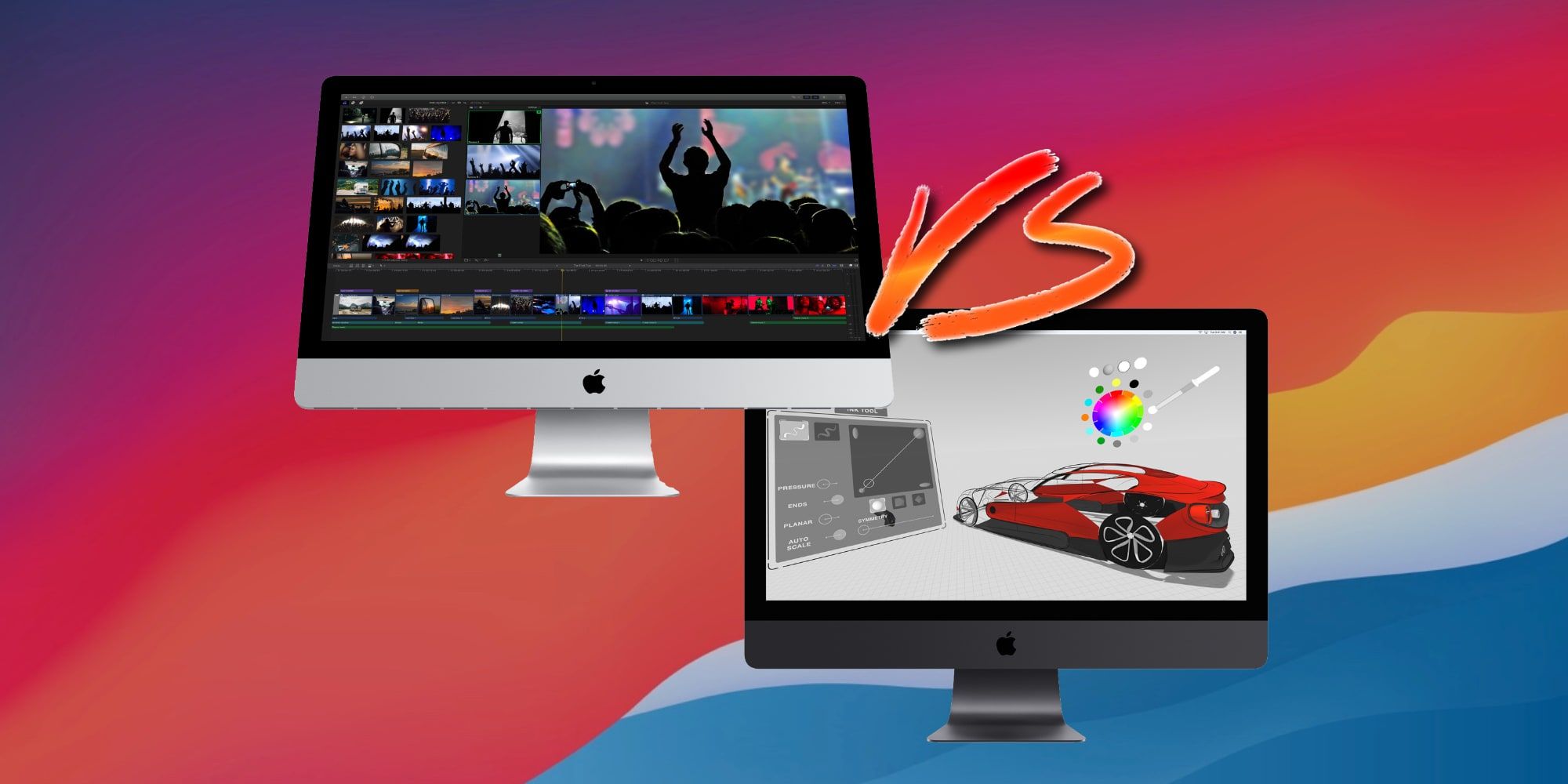

#Imac pro vs imac 5k mac#
While the default Mac Pro case comes with feet, these can be swapped out for wheels should you need to move the machine around your office or studio. It’s a handy way to quickly get to the parts you need to. With that in mind, the Mac Pro features a top-mounted handle that, when lifted, pulls away the entire exterior covering of the computer, revealing its high-powered guts. Given the Mac Pro’s focus on modularity, Apple wants its users to be able to access any part of the system in a flash. Still, the iMac Pro may be more up your street if you love the sleek, all-in-one look of the iMac but don’t want to compromise on performance. When you’re building such a tightly integrated computer, modularity has to be sacrificed in order to cram everything in.
#Imac pro vs imac 5k upgrade#
While it is possible to upgrade things like the memory, it’s a very involved process that’s beyond the scope of most home users Apple, for example, advises that the RAM “isn’t user-accessible” and recommends you take your machine to an Apple Store. That design, though - incorporating a high-resolution display and computer components into a single frame - means the iMac Pro is anything but modular. The iMac Pro is very different, following as it does the famous all-in-one iMac design so beloved over the years, albeit in a space gray colorway distinct from the usual iMac silver. The design has drawn unfortunate comparisons to a cheese grater, but we’re sure Apple would prefer you to harken back to the Power Mac G5 and its somewhat similar perforated front section. These are designed to keep the computer chilled without deafening you with overpowered fans. It features steel handles coupled with an aluminum housing perforated by a latticework of cooling holes.

You see that in the Mac Pro, which features various modules that can be added at will, and a design that lets you access any part of the machine.Įxternally, the Mac Pro’s design is incredibly distinctive. In a candid interview with reporters back in 2017, Apple acknowledged that it had plenty of customers that wanted a modular system that could be altered and upgraded as necessary. We’ll start with the buzzword of the day: Modularity. Fitbit Versa 3Īnd if you’re thinking about getting a regular iMac, we’ve got you covered there too. The 3.3 GHz 8-core Mac Pro easily outperforms a maxed-out iMac, the iMac taking about 15% longer to finish. Specialty operations such as Liquify and other GPU-intensive tasks are just that-specialty, and are not included in this suite. Hence it accurately represents what one might expect in everyday use of Adobe Photoshop CC. The diglloyd Speed1 benchmark uses a mix of the most commonly used Photoshop operations with a file size that allows everything to stay in memory. However, since Photoshop uses far less than its 8 cores, it is likely that the 3.5 GHz 6-core Mac Pro would similarly outperform the iMac as seen here, since the 3.3 GHz 8 core and 3.5 GHz 6-core CPUs have nearly identical turbo boost behaviors.

A note on the 8-core 3.3 GHz Mac ProĪpple offers a 3.0 GHz 8 core, and it would be a bit slower than the 3.3 GHz 8-core Mac Pro tested here. The iMac 5K as tested here is well into Mac Pro pricing territory, approaching $5K as configured, though of course it includes the display. The two machines tested here are the fastest possible models for this type of work. IMac 5K 4.0 GHz, 32GB, 1TB SSD, AMD Radeon R9 M295X 4GB GDDR5 -versus- 2013 Mac Pro 3.3 GHz 8-core, 64GB, 1TB SSD, D700 Send Feedback Related: 2013 Mac Pro, 4K and 5K display, computer display, iMac, iMac 5K, Mac Pro, Macs, memory, Photoshop, SSD


 0 kommentar(er)
0 kommentar(er)
